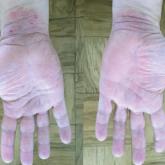Article

Apremilast and Systemic Retinoid Combination Treatment for Moderate to Severe Palmoplantar Psoriasis
- Author:
- Tali Czarnowicki, MD, MSc
- B. Peter Rosendorff, PhD
- Mark G. Lebwohl, MD
Palmoplantar psoriasis is challenging to treat and is unresponsive to many modalities. Combination, rotational, and sequential treatment...
